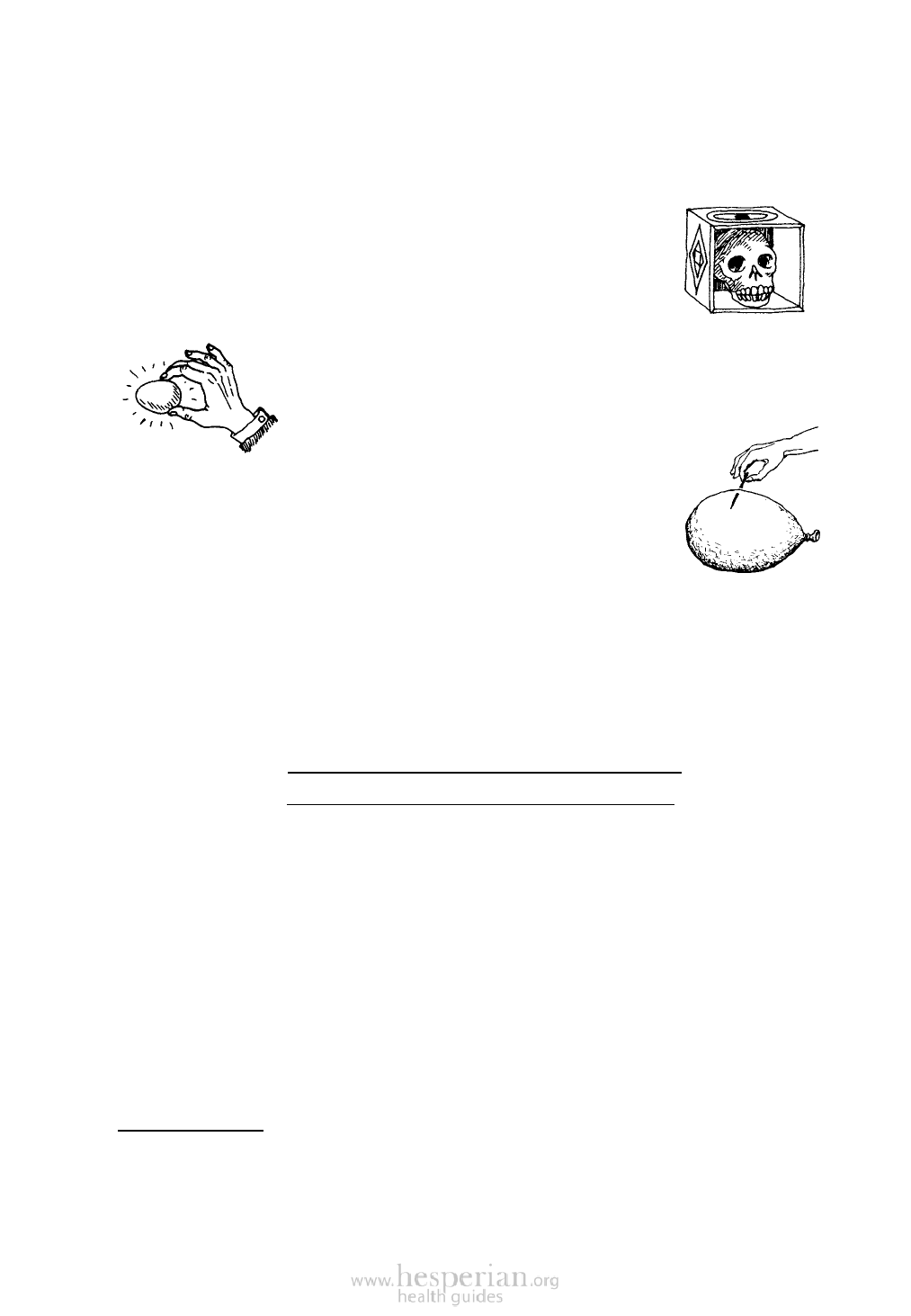
27-13
In the “Hospital without Walls” program in San Ramon, Costa Rica, the health
team conducts a traveling ‘health circus’ with music, skits, and games. One of the
biggest attractions is the ‘magic show’ in which Don Valeriano, a local magician,
performs tricks that help teach aspects of health care. Here are 3 of his tricks:*
First he ‘magically’ changes several glassfuls of water into guaro (a
cheap alcoholic drink). He then takes an empty box, covers it with a
cloth, and asks children from the audience to guard it. He says a few
magic words, pulls away the cloth, and the skull of a man who died
from alcoholism appears inside the box. The skull starts to tell the
audience about the dangers of drinking.
Don Valeriano waves a handkerchief over his hand, blows on it, says
some magic words, and an egg appears in his hand. He then explains the
importance of eggs in good nutrition.
He blows up a white balloon, which represents
a bottle-fed, malnourished baby who has not
been vaccinated. He then takes a needle, stating that it is a disease,
and pricks the balloon. The balloon pops, which means the child dies.
He then blows up a red balloon, representing a healthy, breastfed,
vaccinated baby. When he tries to prick this balloon, it does not pop.
The needle appears to pass right through it!
Having local entertainers help people learn about health can be exciting and
effective. But beware of giving the idea that health care is ‘magic’, and therefore
outside people’s control.
EXAMPLES OF SOCIODRAMAS
AND FARMPEOPLE’S THEATER
To follow are 4 examples of plays that have been put on by groups of mothers,
children, and health workers in Ajoya, Mexico. These were all performed toward
the end of 2-month training programs. The student health workers worked together
with the mothers and children to plan and present the plays. In this way the
students gain practical experience that helps them organize similar activities in their
own villages.
Notice that each of these plays deals with an important social issue affecting
people’s health. Less dramatic forms of health education often are not effective in
dealing with these issues because of people’s strong attitudes, fears, and beliefs.
But when people actually see (on stage) the harm or suffering that can result from
certain practices, they are far more likely to take the message to heart.
*Adapted from Salubritas, American Public Health Association, vol. 3, number 2. April, 1979.